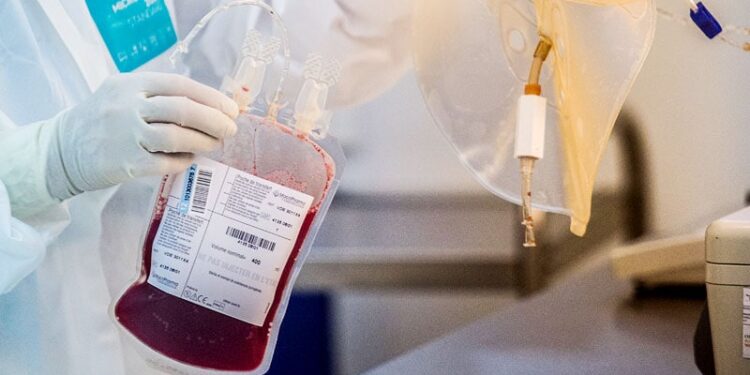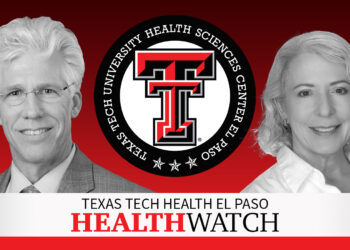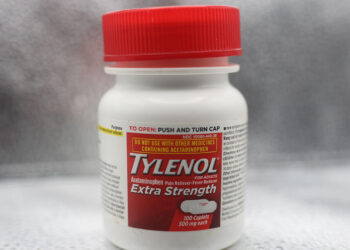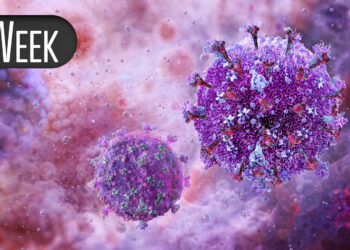SEATTLE — With increasing survival rates after allogeneic hematopoietic stem cell transplantation (HSCT) in children, dermatologists may be seeing more skin conditions associated with HSCT, including the cutaneous manifestations of graft-vs-host disease (GVHD), according to Jennifer T. Huang, MD, associate professor of dermatology and pediatrics, Harvard Medical School, Boston.
GVHD is the most common complication following HSCT, and while it can affect any body organ, the skin is the most commonly involved. “In the US, there are 85 centers in 37 states that perform pediatric allogeneic transplants,” Huang said at the Society for Pediatric Dermatology (SPD) 2025 Annual Meeting. In the US, about 1400 allogeneic transplants are performed each year, and 15% are in children, she noted.
While HSCT is generally associated with cancer treatment, in about one third of cases in children, allogeneic HSCT is used to treat nonmalignant conditions such as bone marrow failure, primary immunodeficiency, and hemoglobinopathy.
Currently, 5-year survival after pediatric allogeneic HSCT ranges from 50% to 90%, said Huang, who is also director of pediatric oncodermatology at Boston Children’s Hospital, Boston. As a result, dermatologists may be seeing more cases of not only cutaneous manifestations of GVHD but also other HSCT-associated effects, such as persistent hair loss and skin cancer.
The grading criteria for acute GVHD are well established for the skin, liver, and intestinal tract effects. For the skin, severity is staged based on the percentage of body surface area affected by a rash and the presence or absence of blistering. Generalized erythroderma and the presence of blisters indicate a more severe stage of GVHD.
When it presents with symptoms such as generalized erythroderma, desquamation, and bullae, acute, severe GVHD can mimic toxic epidermal necrolysis (TEN), a severe drug-induced skin reaction characterized by widespread epidermal necrosis. Because transplant recipients often take many medications, it can be difficult to distinguish between the two conditions.
TEN-like GVHD is rare, noted Huang, a co-author of a case series and literature review of TEN-like acute GVHD in pediatric bone marrow transplant patients. “Of the 10 patients in the series with TEN-like GVHD, seven had other organ involvement, and 80% died,” she said.
Managing Acute GVHD
When managing a patient with acute GVHD with cutaneous manifestations, a biopsy may not be very helpful. She referred to a small study conducted at Boston Children’s Hospital of 27 children who underwent a biopsy for skin eruptions suspicious for acute GVHD. The biopsy yielded a definitive diagnosis of GVHD or other disorder in only four (15%) cases and changed management in only two patients. In contrast, a dermatology consultation was associated with changes in clinical management in nearly 80% of the patients (21 of the 27) compared with 7.4% (2 of the 27) of skin biopsy results.
“We should be careful about doing biopsies in these patients, unless you think that there’s another diagnosis that’s a slam dunk histopathological diagnosis like leukemia cutis,” she said. “Otherwise, you cannot differentiate GVHD from drug rash or viral exanthem, and you should rely on your clinical signs and symptoms.”
Second, dermatologists need to know the details of the transplant to evaluate the risk, and third, “look for acral involvement and systemic symptoms to lead you to the diagnosis, and don’t rely on skin biopsy,” she said. “Importantly, treat aggressively and early, especially if there is TEN-like GVHD.”
Chronic GVHD
Acute GVHD is the most important risk factor for developing chronic GVHD, a complex, multisystem disorder that is distinct from acute GVHD, with features that resemble autoimmune and other immunologic conditions.
“I think of chronic GVHD as alloimmunity,” Huang explained. Continuing inflammation activates an “alloresponse,” resulting in the development of what appears to be an autoimmune disease affecting the skin and other organs “as a response to chronic inflammation,” she said.
Chronic skin GVHD most commonly presents in children with eczematous, sclerotic, or lichenoid skin changes and can often be diagnosed clinically without a biopsy in many cases. If a patient presents with diagnostic features such as poikiloderma, lichen planus-like features, sclerotic features, morphea-like features, and lichen sclerosus-like features, biopsy confirmation is generally not required, she noted.
Regardless of whether it’s acute or chronic, there are minimal histopathologic criteria for diagnosing active GVHD, Huang said. These include the presence of apoptosis in the epidermal basal layer or lower Malpighian layer or outer root sheath of hair follicles, or acrosyringium, lichenoid inflammation, vacuolar changes, and lymphocytic satellitosis.
Management of chronic GVHD is usually multifactorial, with three main goals: to improve quality of life (addressing symptoms, daily activities, and visible changes); to minimize systemic immunosuppression; and to avoid permanent disfigurement.
“There are effective topical therapies for skin GVHD that can minimize systemic immunosuppression, and these can often do the trick,” which include steroids, as well as tacrolimus and ruxolitinib, she said. Preventive measures are underutilized, such as gentle care for dry skin, treating other rashes, and, very importantly, sun protection, because sunburn can trigger GVHD, she added.
Phototherapy is also a good therapeutic option for skin-directed therapy. In addition, there are now several FDA-approved targeted therapies for chronic GVHD in children, including ibrutinib, ruxolitinib, belumosudil, and axatilimab.
“As dermatologists, we can also guide therapy with biologics that we feel comfortable with but that our other colleagues may not know much about,” said Huang. “Let’s maximize skin-directed therapies for treating this disease. We don’t want to lose the graft, and we also don’t want permanent disfigurement — this has a lot to do with recognizing the disease early and treating it aggressively.”
Huang reported having no relevant financial relationships or conflicts of interest.
Roxanne Nelson is a registered nurse and an award-winning medical writer who has written for many major news outlets and is a regular contributor to Medscape Medical News.
Source link : https://www.medscape.com/viewarticle/graft-vs-host-disease-children-what-dermatologists-need-know-2025a1000lf1?src=rss
Author :
Publish date : 2025-08-13 11:48:00
Copyright for syndicated content belongs to the linked Source.














